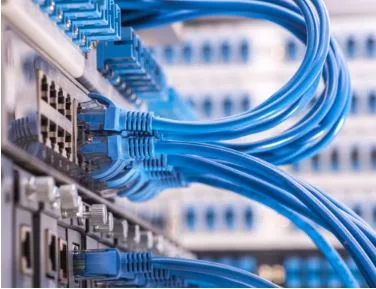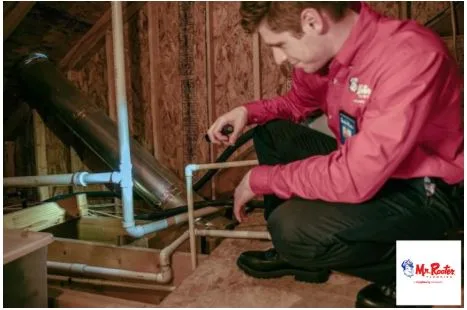What Are Best Practices for Data Center Cabling?
Efficient, organized, and scalable data center cabling is the backbone of any modern IT infrastructure. As data centers grow in complexity and capacity, proper cabling design and implementation become not just a matter of convenience, but one of performance, uptime, and long-term cost control. Whether you’re building a new facility or upgrading an existing one, adhering to best practices in data center cabling ensures reliability, enhances airflow, simplifies maintenance, and supports future scalability.
In this blog, we’ll explore industry-recommended best practices for data center cabling to help IT teams optimize their setups and avoid costly pitfalls.
- Start with Strategic Planning
Before laying a single cable, develop a detailed cabling plan. This includes:
- Mapping the physical layout of the data center, including server racks, switches, power sources, cooling units, and pathways for cable routing.
- Identifying current and future capacity needs, including bandwidth requirements, equipment expansion, and technology upgrades.
- Selecting appropriate cable types, such as copper (Cat5e, Cat6, Cat6a) for shorter runs or fiber optic (single-mode or multi-mode) for longer or higher-speed connections.
Planning should also account for compliance with industry standards such as TIA-942 and ANSI/BICSI 002, which offer frameworks for efficient cabling infrastructure in mission-critical environments.
- Choose Between Structured and Point-to-Point Cabling
One of the first design decisions involves selecting between structured cabling and point-to-point cabling:
- Structured Cabling uses patch panels and trunks to create a consistent, modular infrastructure. It supports easier changes and better cable management, making it ideal for large or growing data centers.
- Point-to-Point Cabling, in contrast, directly connects equipment, usually with fewer patch points. While simpler in small setups, it becomes chaotic and error-prone as scale increases.
For most enterprise-grade facilities, structured cabling is the best practice due to its flexibility, reduced downtime, and ease of documentation.
- Follow Proper Cable Management Techniques
Cable management isn’t just about aesthetics—it impacts airflow, signal integrity, and troubleshooting efficiency. Key techniques include:
- Use color-coded cables to differentiate between systems (e.g., network, power, voice, storage).
- Label both ends of every cable with machine-readable labels that include destination information or port IDs.
- Bundle and route cables using Velcro ties rather than plastic zip ties, which can crush cables and damage insulation.
- Separate power and data cables to minimize electromagnetic interference (EMI).
- Utilize horizontal and vertical cable managers to route cables cleanly through racks.
Avoid running cables across floors or behind equipment without proper support—they should follow designated pathways like trays, ladders, or underfloor channels.
- Maintain Optimal Cable Lengths and Slack
Keeping cable runs as short as possible reduces latency and improves signal quality. However, a little slack—roughly 10%—should be allowed to accommodate maintenance or movement without straining connections.
- For copper Ethernet cables, adhere to the maximum length limit of 100 meters.
- For fiber optics, consult specifications regarding modal bandwidth and connector loss, which impact distance and signal quality.
Excessive slack should be avoided to prevent airflow blockage and clutter. Use slack managers when necessary, and always coil cables in wide, loose loops to maintain bend radius limits.
- Design for Scalability and Flexibility
A well-designed cabling system should accommodate future growth. Best practices for scalability include:
- Overprovision cable pathways and trays by at least 30% to 50% to account for new deployments.
- Leave spare ports and patch panel capacity for future expansion.
- Use modular patch panels and enclosures that allow easy swap-in of new components without disrupting existing connections.
- Implement high-density cabling solutions (e.g., MPO/MTP for fiber) that support more connections in less space.
By anticipating future needs, you avoid disruptive and expensive rip-and-replace scenarios.
- Maintain Proper Documentation
Data center cabling should be meticulously documented, including:
- Cable maps showing the connection paths, lengths, and types of cables used.
- Labeling records that map each port, panel, and cable to its function or device.
- Change logs that track moves, additions, and removals.
- Topology diagrams that show the logical and physical layout of the cabling system.
Modern DCIM (Data Center Infrastructure Management) tools can automate much of this process, allowing real-time updates and alerts when inconsistencies are detected.
- Implement Redundancy and Failover Paths
To ensure uptime and service continuity, redundancy must be built into the cabling infrastructure:
- Use dual power and network cabling paths for critical systems.
- Follow diverse routing practices—don’t run both primary and backup cables through the same conduit or tray.
- Create failover loops where traffic can be rerouted automatically in case of cable failure.
This approach aligns with Tier III and IV data center requirements and is essential for maintaining SLAs in production environments.
- Prioritize Cooling and Airflow Optimization
Cabling can significantly affect data center airflow. Poor routing can obstruct vents, raise temperatures, and increase cooling costs. To support efficient airflow:
- Route cables away from air intakes and exhausts.
- Avoid overfilling cable trays or vertical ducts.
- Consider overhead cabling to keep underfloor spaces clear for cold air delivery (or vice versa depending on your cooling design).
- Use blanking panels to prevent hot/cold air mixing in empty rack spaces.
Managing cabling in tandem with your cooling strategy improves both performance and energy efficiency.
- Standardize Patch Cords and Accessories
Using cables of varying quality or dimensions introduces inconsistencies. Instead:
- Standardize cable types (lengths, colors, brands) to ensure compatibility and simplify replacements.
- Use pre-terminated cabling where possible to reduce on-site termination errors and speed up installation.
- Source connectors, patch panels, and racks from the same vendor or compatible ecosystem for seamless integration.
A standardized approach also improves inventory control and training consistency.
- Train and Enforce Cabling Protocols
Even the best-designed system will degrade over time if users don’t follow protocol. Establishing and enforcing data center cabling policies ensures long-term integrity:
- Train all technicians and contractors on routing, labeling, and documentation practices.
- Audit the cabling infrastructure regularly to identify and correct deviations.
- Implement change management procedures before any cabling modifications.
When everyone adheres to the same standards, troubleshooting becomes faster, and risks are significantly reduced.
Final Thoughts
Data center cabling is a critical foundation for IT operations, and investing in proper design, implementation, and maintenance pays dividends in uptime, efficiency, and future readiness. From structured cabling systems and airflow management to color-coded labeling and redundancy paths, the best practices outlined in this blog offer a holistic approach to building a resilient, organized data center infrastructure.
As technology evolves—particularly with the rise of edge computing, AI workloads, and 400G networks—the importance of scalable and future-proof cabling will only increase. By prioritizing these best practices today, you lay the groundwork for agility and success in tomorrow’s digital landscape.





